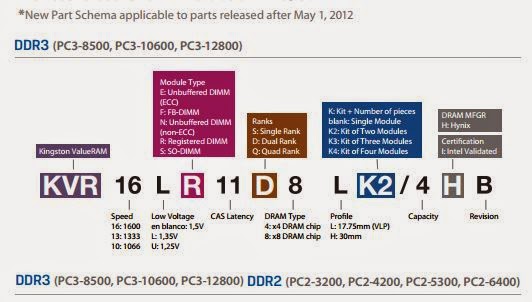Use AMISCE tool to update BIOS configuration under linux
Use AMISCE tool to update BIOS configuration under linux
Test fucntion without change dump file
1.Copy SCELNX_64 to Linux_Flash folder
2.cd Linux_Flash
3#afulnx_64 /MAKEDRV
4.#afulnx_64 /GENDRV [Option 1] / (ex:./afulnx_64 /GENDRV 2.6.32-71.e16.x86_64 /)
[Option 1]: Specific kernel source 'KERNEL=XXXX' , #uname-r to check
5.#make
6.#SCELNX_64 /o /s nvram.txt /h Hii.db /v /q
7.Reboot to BIOS, change some BIOS configuration
8.Save,boot to linux
9.Boot to OS, cd AMI_SCE folder
10.#SCELNX_64 /i /s nvram.txt (Restore BIOS to original configuration)
11.Reboot to BIOS, check if configuration is back
--------------------------------------------------------
Change password by modify dump file
Set BIOS Administrator/User password through SCE utility:
0. Set BIOS Administrator/User password and dump nvram file(contain password) with below command
./SCELNX_64 /o /c /l list.txt /n nvram.txt /h hii.db
1. Dump nvram file(no password) with below command
./SCELNX_64 /o /c /l list.txt /n nvram.txt /h hii.db
2. Edit dumped nvram file to change "Variable Data" about AMITSESetup to set BIOS password. (see nvram.txt in step 0)
No password
Variable Name
AMITSESetup
Variable Data
00 00 00 00 00 00 00 00 00 00 00 00 00 00 00 00
00 00 00 00 00 00 00 00 00 00 00 00 00 00 00 00
00 00 00 00 00 00 00 00 00 00 00 00 00 00 00 00
00 00 00 00 00 00 00 00 00 00 00 00 00 00 00 00
00 00 00 00 00 00 00 00 00 00 00 00 00 00 00 00
01
Username /password =>是 Admin / 111111 ; User / 111
Variable Name
AMITSESetup
Variable Data
6A 93 87 26 20 BA 6C 4D C7 E0 22 74 7D 07 D8 9A
33 2E 8E C1 E9 54 44 E8 9F 7B FA 0E 55 A2 B0 35
0B C9 66 5C C1 EF 1C 83 6A 93 87 26 20 BA 5D 4D
F6 E0 13 74 7D 07 D8 9A 33 2E 8E C1 E9 54 44 E8
9F 7B FA 0E 55 A2 B0 35 0B C9 66 5C C1 EF 1C 83
00
3. Update nvram file to system using following command.
./SCELNX_64 /i /l list.txt /n nvram.txt
4. Reset system and check if BIOS password is set.
Refer:
ftp://12.230.196.227/joel_drivers/BIOS%20Flash%20Utilities/Linux%20Bios%20Flash%20Procedure/UEFI/v2.37/ROMUtils_2.37/LNX/afulnx32/readme_afulnx.txt
Test fucntion without change dump file
1.Copy SCELNX_64 to Linux_Flash folder
2.cd Linux_Flash
3#afulnx_64 /MAKEDRV
4.#afulnx_64 /GENDRV [Option 1] / (ex:./afulnx_64 /GENDRV 2.6.32-71.e16.x86_64 /)
[Option 1]: Specific kernel source 'KERNEL=XXXX' , #uname-r to check
5.#make
6.#SCELNX_64 /o /s nvram.txt /h Hii.db /v /q
7.Reboot to BIOS, change some BIOS configuration
8.Save,boot to linux
9.Boot to OS, cd AMI_SCE folder
10.#SCELNX_64 /i /s nvram.txt (Restore BIOS to original configuration)
11.Reboot to BIOS, check if configuration is back
--------------------------------------------------------
Change password by modify dump file
Set BIOS Administrator/User password through SCE utility:
0. Set BIOS Administrator/User password and dump nvram file(contain password) with below command
./SCELNX_64 /o /c /l list.txt /n nvram.txt /h hii.db
1. Dump nvram file(no password) with below command
./SCELNX_64 /o /c /l list.txt /n nvram.txt /h hii.db
2. Edit dumped nvram file to change "Variable Data" about AMITSESetup to set BIOS password. (see nvram.txt in step 0)
No password
Variable Name
AMITSESetup
Variable Data
00 00 00 00 00 00 00 00 00 00 00 00 00 00 00 00
00 00 00 00 00 00 00 00 00 00 00 00 00 00 00 00
00 00 00 00 00 00 00 00 00 00 00 00 00 00 00 00
00 00 00 00 00 00 00 00 00 00 00 00 00 00 00 00
00 00 00 00 00 00 00 00 00 00 00 00 00 00 00 00
01
Username /password =>是 Admin / 111111 ; User / 111
Variable Name
AMITSESetup
Variable Data
6A 93 87 26 20 BA 6C 4D C7 E0 22 74 7D 07 D8 9A
33 2E 8E C1 E9 54 44 E8 9F 7B FA 0E 55 A2 B0 35
0B C9 66 5C C1 EF 1C 83 6A 93 87 26 20 BA 5D 4D
F6 E0 13 74 7D 07 D8 9A 33 2E 8E C1 E9 54 44 E8
9F 7B FA 0E 55 A2 B0 35 0B C9 66 5C C1 EF 1C 83
00
3. Update nvram file to system using following command.
./SCELNX_64 /i /l list.txt /n nvram.txt
4. Reset system and check if BIOS password is set.
Refer:
ftp://12.230.196.227/joel_drivers/BIOS%20Flash%20Utilities/Linux%20Bios%20Flash%20Procedure/UEFI/v2.37/ROMUtils_2.37/LNX/afulnx32/readme_afulnx.txt

